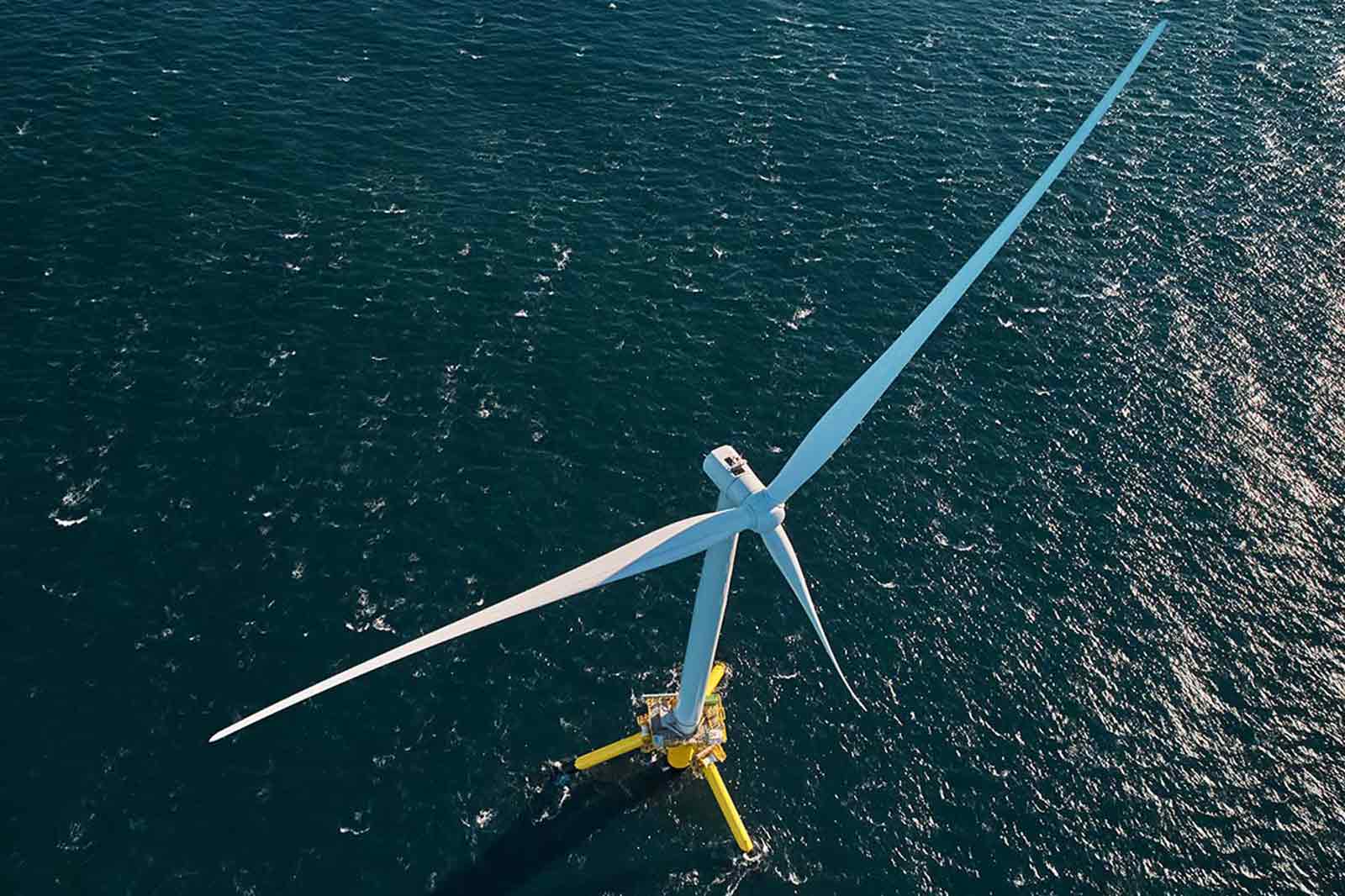TetraSpar Demonstrator
Floating Offshore Wind in Norway.


RWE owns and operates offshore wind turbines throughout Europe with a total of 3.3 GW. The company is therefore uniquely positioned to drive the energy transition forward, as well as to play a leading role in the sector at an international level.
RWE’s experience in deploying offshore wind, combined with its in-house engineering expertise and global approach means it is particularly well placed to develop floating wind.
Floating wind uses the same turbines as conventional ‘seabed-fixed’ offshore wind but they are deployed on top of floating structures that are secured to the seabed with mooring lines and anchors. Electricity is transmitted to shore via subsea cables.
This technology opens up the possibility of deploying offshore wind projects in regions with deeper waters in established markets like the UK and France, and also in new regions like Japan and the west coast of the USA.
As a less mature technology than seabed-fixed, floating wind is currently more expensive but costs are expected to fall rapidly so that it should become an attractive choice for markets with areas of high wind resource near coastal load centres.
RWE’s ambition is to safely develop, build and operate cost-competitive, commercial-scale floating projects around the world. To achieve this, we are implementing a world-class capability development programme, including extensive supply chain engagement, participation in leading joint industry projects and active involvement in two high-profile demonstration projects.


These demonstration projects are already giving us unique insights into the particular challenges and opportunities of different structure types, materials, mooring systems and installation methodologies. Crucially, the learnings that we get from these projects will help drive down cost and risk of our commercial-scale projects in the future.
RWE has secured a commercial-scale floating wind lease off the California coast. The site is situated 45km offshore in the Humboldt region and has a potential installed capacity of 1.6 GW.


We have extensive experience in developing, building and operating offshore wind farms – both independently and together with partners.
Every market is different and we know from experience that finding the right partners can be the key to success.
Our approach is to find capable partners with complementary skill sets and build long-term relationships.

As one of the world‘s leading renewable energy companies, RWE has strong relationships with companies throughout the global supply chain. RWE is extensively engaging with the supply chain to understand specialist skills, identify capability gaps and explore opportunities for closer collaboration.
In addition RWE will be proactively engaging with other sea users, such as fisheries, military and shipping stakeholders, to identify challenges, suitable mitigation measures and incorporate feedback within the wind farm design to enable co-existence.